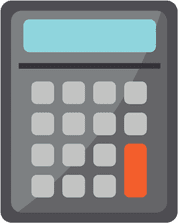You might be skeptical that you can get any kind of decent cash flow and a reasonable return from a regular apartment building deal if you get other investors involved. I mean, is the pie really big enough for everyone?
You betcha!
It most certainly IS possible to make this work. Let’s take a look at a fictitious deal but make some real-world (and conservative) assumptions.
While we always try to buy at a discount and then try to double the value of the building in 3-5 years, the example that I’m going to describe does not assume either. In other words, we’re going to talk about a boring deal that still works. Chances are, if you try a little harder, you should be able to do a lot better.
But let’s stick with a conservative example to prove our point. Let’s see how we can nevertheless create a good return for our investors and ourselves.
Watch the short video below, in which I use the Syndicated Deal Analyzer to analyze our fictitious, boring 20-unit deal.
Here are the key take-aways from this video:
- Deals bought with investors CAN cash flow and yield attractive returns – for you and your investors.
- You don’t necessarily have to buy a killer deal. Sometimes buying a profitable ATM machine is all that it takes. OK, then maybe buy a few more -;)
- Raising money from others lets you do as many deals as you want to.
- Raising the income (or lowering the expenses) even by a little bit can make a HUGE difference in the returns.
As you can see by now, it's useful to have a financial model like the Syndicated Deal Analyzer (SDA). It makes analysis so much faster. Like other real estate strategies, this is a number's game: the more deals you can analyze, the more offers you can make, and the more deals you'll get done. You need the SDA to get started with apartment building investing.
Purchase the Syndicated Deal Analyzer Now
To your success!
Michael

Hi Michael,
I have a question for you about something I’m running into with creating my pitch book.
I love your idea of using a sample property to show potential investors what a deal would look like but my question is where have you found you sample deals? I know you mentioned just hopping onto loopnet and using a listing on there but the issue I’m finding is that the loopnet deals are almost always proforma numbers and they don’t break down the actual financials at all. Plus most of the deals are just so bad that I’m having a hard time even thinking how I could present it in a positive light.
I hate the thought of just making complete guesstimates on a property for such an important book.
I was hoping to find an example of a real deal with real financial break downs that I could show. I’ve also tried going to actual brokers websites to see if they have any better break downs that I could use but they really weren’t any better than loopnet.
Am I over thinking this or should my next step be to contact a broker just to get a sample property for the book? The proformas and lack of any real detail in these listings is driving me crazy! haha
Thanks so much for the help!
When you see “pitch book” I assume you’re referring to the Sample Deal Analyzer I mention in the eBook. My answer to “How to get a marketing package with good numbers” has two parts:
(1) The best marketing packages are from the big brokers. Google your closest Marcus & Millichap office, call them, and get on their email list. Ask them to send you a deal that roughly meets your criteria (either listed or recently closed) immediately. These packages contain nearly EVERYTHING you need.
(2) Even so, you must be very suspicious with the numbers provided. This is why I have “Rules of Thumb” in my Syndicated Deal Analyzer to guide you. The short answer is, the expenses should be between 45% – 50% of income which you should use whenever the provided expenses are lower than that.
Hope that helps!
Michael